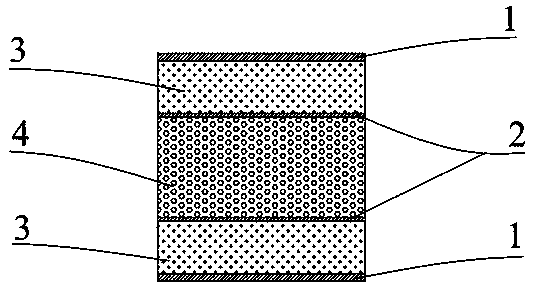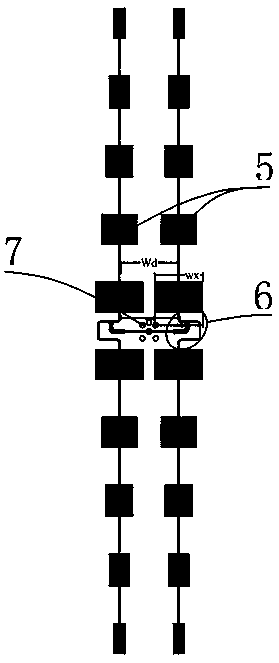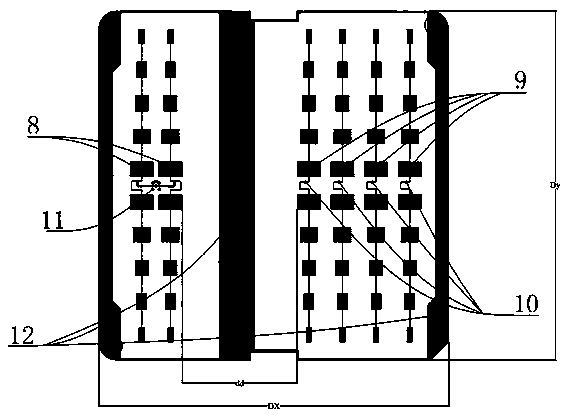Method for improving transceiver isolation degree of vehicle-borne millimeter wave radar antenna
A millimeter-wave radar, transceiver isolation technology, applied in the direction of antenna, antenna coupling, antenna array, etc., can solve the problem of lack of suppression, the influence of the uncertain shape of the transceiver antenna pattern, and the poor broadband effect. isolation, reducing overall size requirements, avoiding the effect of vertical size
- Summary
- Abstract
- Description
- Claims
- Application Information
AI Technical Summary
Problems solved by technology
Method used
Image
Examples
Embodiment Construction
[0025] like image 3 As shown, the overall size of the radar antenna array is Dx*Dy: 73mm*73mm, including one transmitting antenna 8 and four independent receiving antennas 9 . The entire antenna array is attached to the antenna copper clad layer 1, such as figure 1 shown;
[0026] like figure 2 As shown, the microstrip array antenna 8 adopts the form of two columns of microstrip patch antennas 5 fed in series with 10 elements each, and the feed amplitude of each antenna is controlled by adjusting the patch size perpendicular to the vertical direction of the feed line to form Taylor amplitude weighting, resulting in a 25dB sidelobe radiation pattern.
[0027] The 10-element antenna feed point 10 in each row is located between the fifth unit and the sixth unit. The antenna feed point 10 should meet the requirements of reaching the fifth unit and the phase of the sixth unit. The phase of the operating frequency is 180°. The structure See figure 2 The antenna feed structur...
PUM
| Property | Measurement | Unit |
|---|---|---|
| Thickness | aaaaa | aaaaa |
| Thickness | aaaaa | aaaaa |
| Thickness | aaaaa | aaaaa |
Abstract
Description
Claims
Application Information
 Login to View More
Login to View More - Generate Ideas
- Intellectual Property
- Life Sciences
- Materials
- Tech Scout
- Unparalleled Data Quality
- Higher Quality Content
- 60% Fewer Hallucinations
Browse by: Latest US Patents, China's latest patents, Technical Efficacy Thesaurus, Application Domain, Technology Topic, Popular Technical Reports.
© 2025 PatSnap. All rights reserved.Legal|Privacy policy|Modern Slavery Act Transparency Statement|Sitemap|About US| Contact US: help@patsnap.com



